As everyone is away, the M16 suffered from maintenance and reliability problems early in its deployment to Vietnam. While working to resolve these issues, the US government wanted to find a replacement weapon that would be more suitable to guerrilla type use to supply to insurgent forces. A contract for to this end was awarded to the TRW corporation in 1971, and the result was the TRW Low Maintenance Rifle.
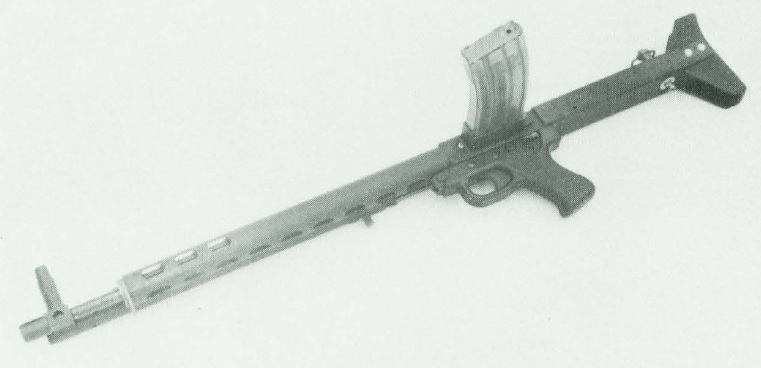
Rather than judge the design by first glance, it’s worth looking at it more closely – there are a lot of different things at play in this rifle. The information I can find doesn’t discuss whether this was intended to be manufactured by foreign groups with limited resources, but that seems to have been TRW’s thought through development (or alternatively, they wanted to be serious about minimizing manufacturing costs). The rifle does use the standard M16 magazine and M193 5.56mm cartridge (although at least one of them was used experimentally with the XM216 flechette round).
The rifle is operated by a long-stroke gas piston, a system know for reliability (the piston and gas tube are on the right side of the weapon). The bolt uses a roller locking system similar to the German MG42, with the rollers located on the top and bottom of the bolt so as to not interfere with the magazine feeding in from the left. Roller locking systems like this are well suited to cheap and easy production, with reduced machining and heat treating requirements. The rifle fires only in full-auto from an open bolt, which is again a very simple system. The trigger simply holds down the sear allowing the weapon to cycle continuously until the trigger is released and the sear catches the bolt. This cuts the number of trigger mechanism parts at least in half compared to a typical select-fire closed bolt system. In this case, TRW actually just used the grip and trigger assembly off the M60 machine gun. The receiver and buttstock assembly appear to be pretty simple pieces, and are connected together by a simple pin instead of using interrupted threads or lugs or other cleaner-looking but more expensive interface.
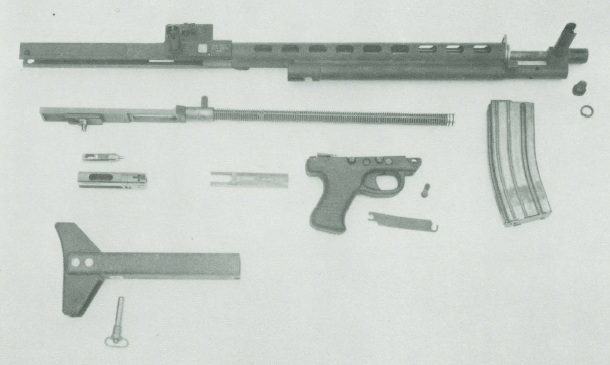
The open bolt and automatic-only operation may not have contributed to exceptional accuracy in practical use, but the objective here was reliability in harsh environments (hence “low maintenance rifle”). The bore was chrome lined, and the internals were coated with what is described as a semi-permanent dry film lubricant, to avoid attracting dirt and dust (the manual recommended inspecting and touching up this lubricant every 2000 rounds). In an unusually prescient move, the gun was also designed to automatically pull a dust cover closed over the ejection port when the bolt was all the way back (remember that since this rifle fired form an open bolt, locking the bolt open would have been the “ready” condition). The cover would be opened up automatically as the bolt went forward to fire.
We have not found any testing reports on the LMR’s performance, but we suspect it would have been very effective. Unfortunately for TRW, by 1973 American troops were leaving Vietnam and the project was no longer considered important. It was cancelled before any rifles were actually put into service (in fact, one could think of this weapon as an analog to some of the German Volksturm designs). We do have a copy of a 1973 technical manual on the rifle available for free download, which does a very good job of describing how the rifle operated (and has a nice exploded parts diagram). You can find it on the TRW Low Maintenance Rifle page in the Vault, or right here:
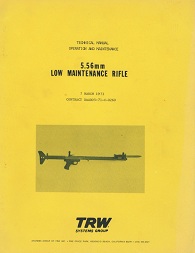

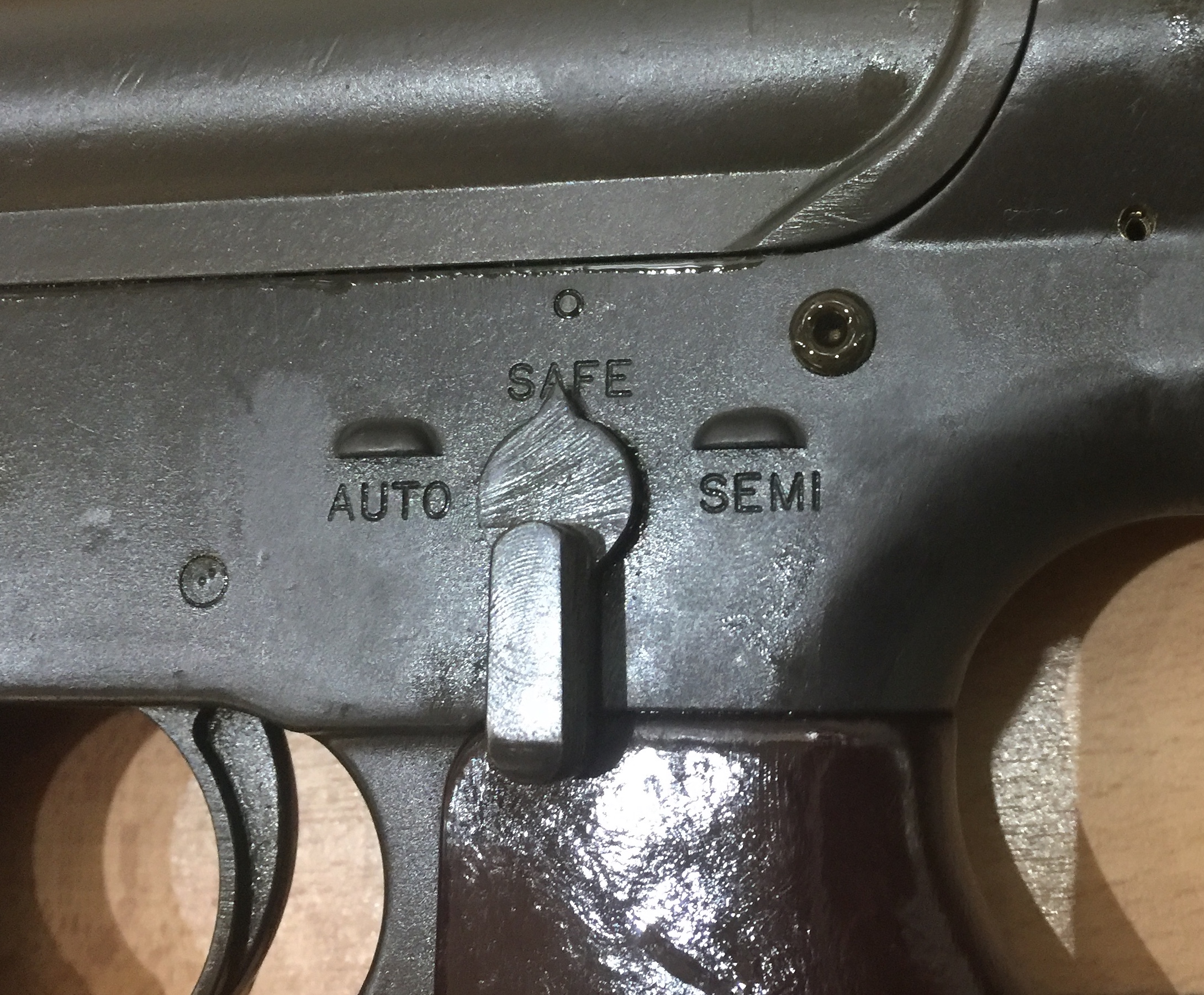
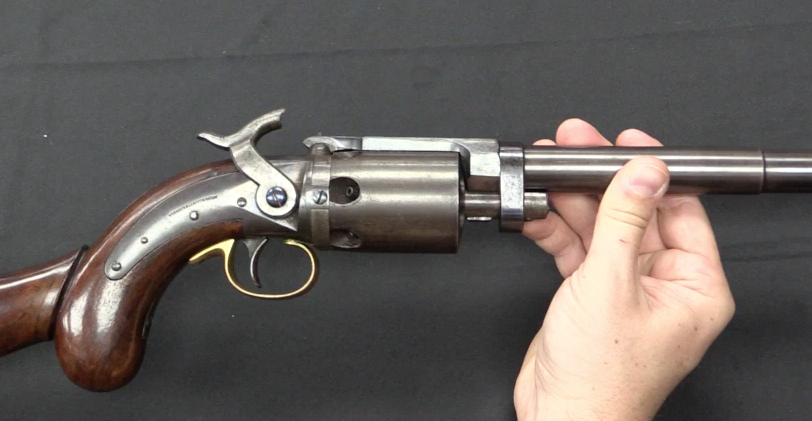
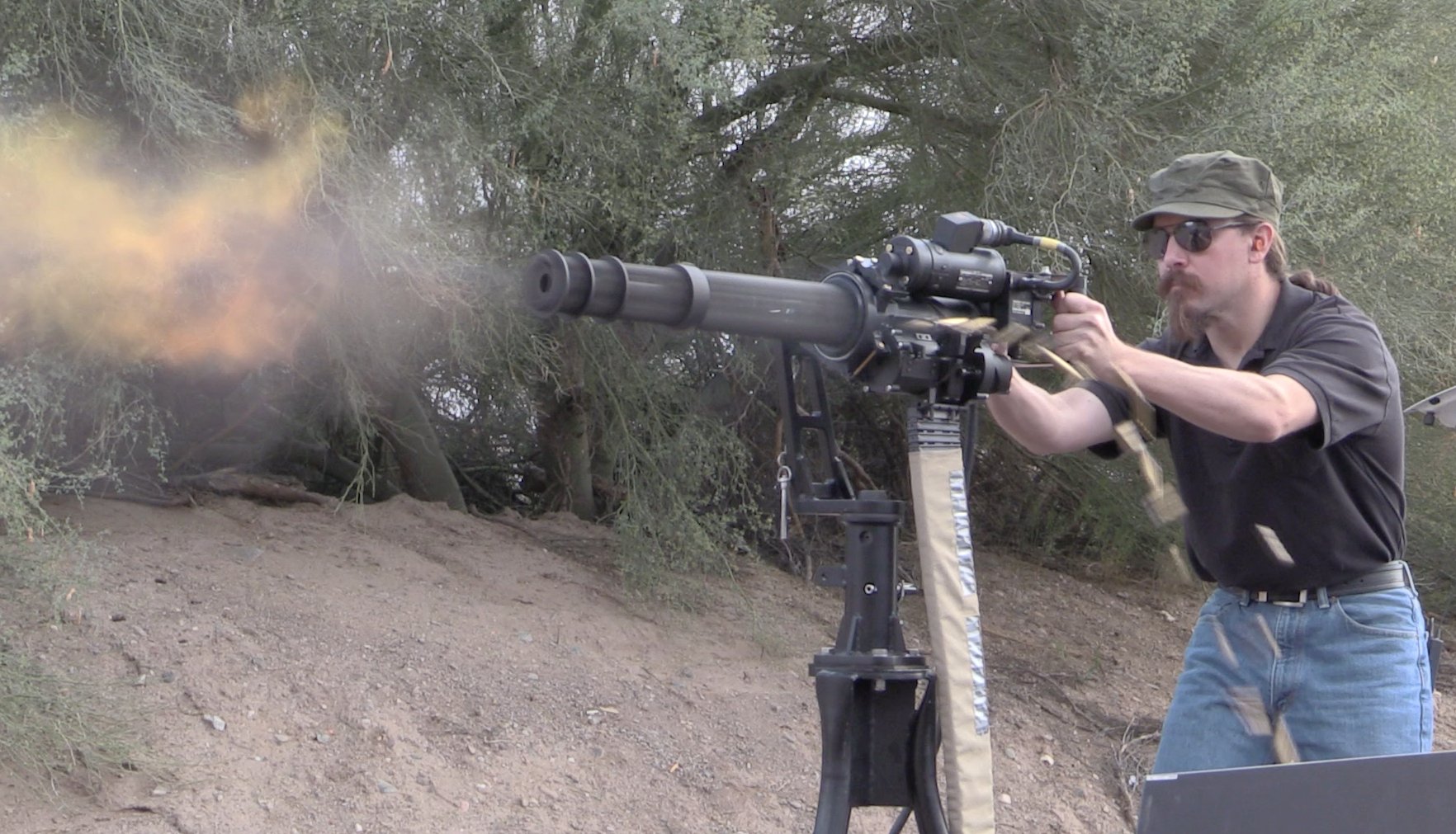
Very interesting. Wasn’t there also an early bid to create a four-barrel 20-ga. or 16-ga. shotgun for equipping militia/auxiliaries/guards in the underdeveloped world in the early 1960s? I guess the basic idea was a firearm with a very simple manual of arms but with more firepower than a double-barrel shotgun.
In the case of the Low Maintenance Rifle, the layout is rather similar to the German FG42 even if the operating system is quite different. The resemblance is reinforced by the M60/FG42 pistol grip and the sights. Something like an attempt to reverse engineer the Kalashnikov, no? Thanks for posting this!
I thought roller locking involved very high tolerance, and expensive machining, which is why H&K have moved away from it ? That’s just what iv’e read.
I think rollers need to be made very precisely in roller delayed blowback systems (like HK G3, MP5 etc). But in this case rollers are just for locking the breech, because the gun is a gas operated one.
Roller systems do require precisely made rollers and locking wedges, but the advantage is those are pretty much the only high-precision parts needed (and rollers in particular are pretty easy to make to very tight tolerances).
Rollers are typical cylindrical parts that can be readily finalized to insane levels of precision with centerless grinding. It does look like the designers of this weapon wanted to use automated, automotive-industry processes.
To echo Ian’s comment about Rollers being simple to make to tight tolerances;
They almost make themselves!
The finishing process consists of lapping the heat treated rollers between two rotating flat plates. The entire batch of rollers (up to several thousand) come out exactly the same diameter and perfectly cylindrical.
If you use lapping plates with annular grooves in them, the result will be spheres. It’s a very long established process, water powered mills for grinding stone spheres were established in the Almsbach Gorge in Austria in 1683, and there are still some working there. Unfortunately I can’t find a good photo, theyre really simple, a fixed bottom plate of stone and a log with water wheel blades fastened to it for a top plate.
A more advanced version of the same concept gets used to make ball bearings and balls for ball-point pens.
Where the heck were you in 1987 when I was running Twilight 2000? I had exactly one picture to go on!
In the game the competing US governments were giving out the essential bits of an M16 as a kit with plans to make things like the stock and receivers in a high school metal shop. That was called an M16EZ.
I found the LMR in a copy of the Army Green Book and decided that it made more sense than a sheet-metal M16. But I had no other info!
Been driving me nuts for decades.
Oh lord, I haven’t thought about Twilight 2000 for YEARS… I know I still have my rulebooks around here somewhere.
Not germane, but MAN it’s good to run across someone who remembers Twilight 2000!!!
Oh yeah: black virgin of czestochowa and the Vistula… http://2.bp.blogspot.com/_DSs2bX13hVc/S3LqhUVI3UI/AAAAAAAABrw/T3TxN_oVs3M/s320/Twilight2000.jpg
As for the side-mounted magazine:
Swiss Furrer M1925 7.5mm
German-Swedish SAV m/1940 6.5mm [German SS MG35 8mm]
Melvin Johnson’s M1941 LMG
Fallschirmjägergewehr 42 8mm
and a good many SMG designs from the 1930s and early 1940s [Erma, STEN, etc.]. I guess the argument was made that it allowed a lower prone position and made for intuitive magazine changes for right handed folks…
Didn’t Simonov design a self-loader with the gas system off to the right side like that at one point? That strikes me as odd. What with above the barrel or below the barrel seeming much more common in design.
The MG 13 also springs to mind. In Spain it was less popular than the vz.26/vz.30 (and the locally-made clone, the FAO), while in the Portugal the troops actually preferred the venerable Madsen.
Now that I think of it, the Breda Modello 30 also fits, well kind of, as it used a fixed magazine attached to the right side of the gun loaded via stripper clips.
I can think of a couple of reasons that an AK would beat it for being “low maintenance”…
Also, you have to touch up the lubricant coating every 2,000 rounds? Seriously?
Well sure, but when would the US ever be willing to provide AKs to indigenous militia forces? 🙂 No argument here…except the LMR might have been cheaper to make than the AK. But hey, if nobody built unnecessary guns we’d have a lot less material to post for you.
Actually, the US cut a deal with Indonesia to ship their surplus AK rifles to the Cambodian military in 1970. This is the reason why Lake City started production of sterile 7.62x39mm.
Commander in Chief Pacific Command History 1970 – Volume II, pp 259-260
AK-47 Rifles/Ammunition
(TS) The U.S. and RVN began supplying FANK with captured AK-47 rifles and ammunition in April; however, an additional source was needed to meet FANK requirements. (Redacted text) The remaining 1,420 AK-47 rifles were scheduled for delivery on 17 January 1971.2
(TS) On 31 December, Cambodia MAP was supporting a density of 68,973 weapons that fire AK-47 ammunition. After delivery of the remaining Indonesian AK-47s, the density will be 70,393 weapons. The 30-day ammunition consumption rate will be 8.73 million rounds. To provide a guaranteed continuing source of supply to meet the Cambodian MAP requirement for AK-47 ammunition, production is underway in the Continental United States (CONUS) under a contract paid out of Cambodia MAP funds. CONUS production was 20 million rounds for the period October through December. On 8 January 1971, the SECDEF approved CINCPAC’s request to increase CONUS production to 9.5 million rounds per month. The first two million rounds of CONUS production AK-47 ammunition was airlifted to the RVN on 20 November. The first surface delivery arrived on 1 December with 5.96 million rounds delivered by 31 December. An additional 9.180 million rounds was scheduled to arrive by 13 February 1971.1
(Redacted text) He stated that costs being equal, insertion of M-16s into Cambodia as the standard infantry weapon was much preferred to building a weapon system (AK-47) which was not U.S. supportable without parts engineering or tenuous third country support. However, additional AK-47 could be utilized provided they were procured at no cost to MAP and with no strings attached.2
2. J4312 Point Paper, HQ CINCPAC, 28 Oct 70 and 8 Jan 1971, Subj: AK-47 Rifles/Ammo for Cambodian MAP.
1. Ibid.
2. Ibid.
Large quantities of egyptian-made AKMs were smugled into Afghanistan with Pakistani help in the Eighties, to arm Mujahideen insurgents.
You still see AKs from all over the world there, including the Egyptian ones (which say “Misr” in Arabic script, the Arabic word for — what else? — Egypt. Afghans can read this because the persian script Dari and Pushto uses is very similar, so they know when they have an Egyptian AK). Even saw first model AKs (the stamped guns made BEFORE the first milled ones). Early on we also captured some ‘Port Said’ Carl Gustav M45B clones. Most of the weapons coming in now are Pak, Iranian, and especially Chinese.
You are supposed to *inspect* the lubrication every 2000 rounds, and “touch up” as needed at “high wear” areas. The inspection interval is certainly set at an interval far more frequent than the actual likely need.
How many rifles are intended to go 2000 rounds *or more* before even LOOKING to see if they need to be oiled?
Individual weapons seem like they fall into two categories: Ones that will be in peacetime service for decades, getting shot to death in training and qualification then rebuilt over and over, and ones that will actually be used in combat, which will probably never see more than a few thousand rounds through them before they are lost/destroyed/replaced. This is definitely the latter.
Both the AR and AK designs kind of evolved from the second into the first, because they were good enough on basic principles to have room to grow and improve.
I have never really understood the justification for the side-mounted magazine on the TRW LMR. I would seem to complicate training vs. any other assault rifle likely to be encountered without any clear benefit. I could see an argument for a top-mounted magazine for prone fire or even use with a bipod as a light support weapon, but the side magazine baffles me. It also seems silly not to make the stock a folding unit for more compact carriage and storage or use in tight quarters.
If I was to hazard a guess, I’d say that a bottom mag gets in the way when prone and a top mag requires offset sights. Thus the side mag is chosen by default. As for the fixed stock, remember that the recoil spring is in there. Make it a folder, and you have to find a different place for it. I would be interested to hear from some vets as to how useful a folding stock really is in a combat zone…I suspect they are more popular in the civilian world.
A folding or collapsible stock is a big plus when you factor vehicles into it. The collapsible stock is a must for use when armored up, when you need a 10″ trigger pull or less, but of course that’s not why they were originally used. The original M16A1 was light and handy at only one meter long, but shortening it made it more useful with little loss of combat power.
The guys at Loose Rounds have been testing a Colt 901 and they would probably be hitting at the extreme ranges they’re at if they had less crosswind and hadn’t run out of elevation in the scope. And that’s a 16″ gun.
For CQB a weapon only needs to be “so” compact and barrel length is more of a problem than stock length there. Hence the replacement of MP5s etc. by full-on carbines. The Brits went bullpup for compact, but after the Falklands forced a redesign to include a bayonet, because they actually used them extensively in that conflict.
Most folding and collapsible stocks give you a lousy cheek weld. The Colt design was a compromise forced by the location of the buffer, but it was perhaps the least not bad of its generation. Some of the new stocks are excellent — the MagPul precision rifle stock, particularly.
Bad springs (whether through abusive and incorrect maintenance by troops, or simply inserting them incorrectly) were noted as a major failure point in magazines, especially the M16 (primarily with the 20 rounders, actually).
Side mounted magazine relieves much of the stress on the spring, so “bad” magazines will work longer. Top mounted magazines would offset even more stress, but not only require offset sights* ), but are awkward for individual riflemen to swap (top mounted mags like the Bren are AWESOME for mag changes… if you have an AG swapping mags for you).
Left side magazines are still viable, if more awkward, for a left handed shooter, and still give you most of the advantages of the top mounted magazine.
* Not an show-stopping issue, if you either have sights that can flip back and forth (hopefully, PVT Snuffy remembers to flip BOTH to the same side, or you mechanically linked them so they flip together), or you simply train everyone as a right handed shooter, as many armies have been doing continuously since matchlocks were the new cool hotness.
The side mounted mag over the grip offers some of the benefits of a bullpup, such as increased barrel length compared to conventional rifles, TRW 34″ OAL/20″ BBL vs 40″ OAL/20″ BBL for an M16. A possible benefit is it’s balanced like a bullpup. This speculation is based on Karl and Ian’s conclusion that the FG42 balanced like a bullpup, which is a similar design. It also allows you to get lower in the prone position, but who knows if that was taken into consideration during the design process. On a side note, I wonder if the brass would hit your face firing from the left shoulder.
Good call by Keith, Hrachya and Ian on the reasoning behind using rollers to lock the breech. Their line of reasoning takes into account the other equally-important factors in making a gun like this — ease of manufacture, soldier-proof reliability, mechanical strength, conservation of materials and general mechanical simplicity, all the while striving to maintain a proportional balance with the demands for reasonable accuracy, user-friendliness, available ammunition types and portability.
History is rife with examples of weapons that have sacrificed too much in some areas to achieve more in others, and which have lost sight of the need for balance. The Sten SMG comes to mind — Incredibly easy to make and service in underground workshops, simple to a fault in terms of design and moving parts, but definitely not noted for general reliability and with a tendency to jam at the most awkward moments.
I agree with Ian’s assessment about why the TRW’s magazine is side-mounted ; one other reason may have been that a top-mounted magazine would have more easily given away one’s position when firing from cover.
This may be a BS, but side mounted magazine supposedly has rounds better defying gravity than bottom mounted one, thus leading to (again supposedly) better mag reliability, which is not unwanted, since you are pretending for a title of “low maintenance but apparently reliable rifle”.
My personal opinion is that the project would be even better if they used the 7.62×39 ammo and copied Ak magazines – in that case, “friendly” pro US Vietnam fighters could easily use (advancing) enemy field logistics, and pick up ammo and magazines after fallen foes, not needing to carry an AK or to search for one when they run out of 5.56mm ammo in the middle of the jungle.
I hope one day we’ll see the testing video of this odd rifle at the range.
One of the points of the rifle was that we would be handing them out to allies like candy. Export diplomacy. (It also explains why they were intended to be so cheaply manufactured… if you’re manufacturing them in the US.)
Handing out enemy designs defeats much of that diplomatic benefit. It says either, “We cannot make anything as good as the other guys,” “You monkeys cannot handle modern weapons we produce,” or “You guys aren’t worth new guns.”
They weren’t really intended for US troops to use.
when i try to open the pdf it gives a error message that the file is damaged and cannot be repaired
I checked the file, an d it’s okay. I would suggest right clicking as selecting “save as” to download it to your machine before opening.
Interesting beast, wonder if anyone would be willing to try reproducing it in semi-auto. Reputedly shortly after they ended the program a National Guard officer who had somehow got his hands on a prototype turned up at TRW and asked where he could get more to equip his unit…
Has anyone attempted to track down a copy of this rifles blueprints? It would make for a great semi-auto only build.
The TRW archives do not contain any material on this weapon.
Thanks for your personal marvelous posting! I genuinely enjoyed reading it, you’re a
great author.I will be sure to bookmark your blog and will eventually come back very soon. I want to encourage yourself to continue your great job, have a nice morning!
Would love to see a video on this one.
Ian, I have some pictures of these protype rifles from my time working with the navy small arms collection. Would you like them?
Well if Ian doesn’t want to see them then I sure would.